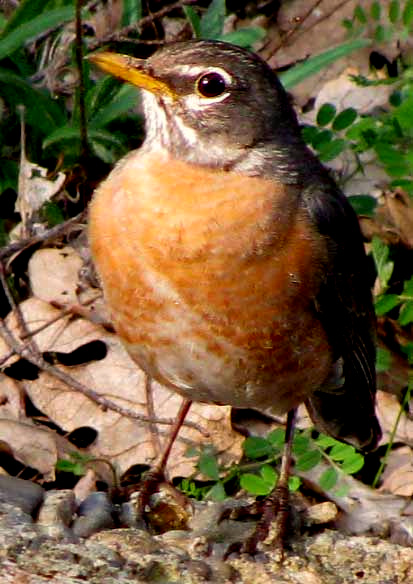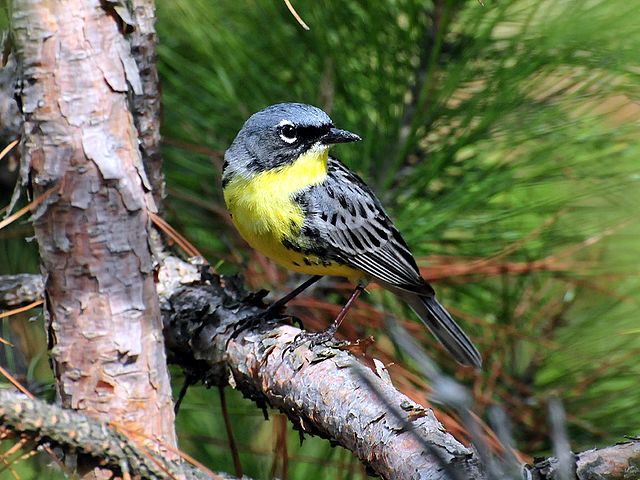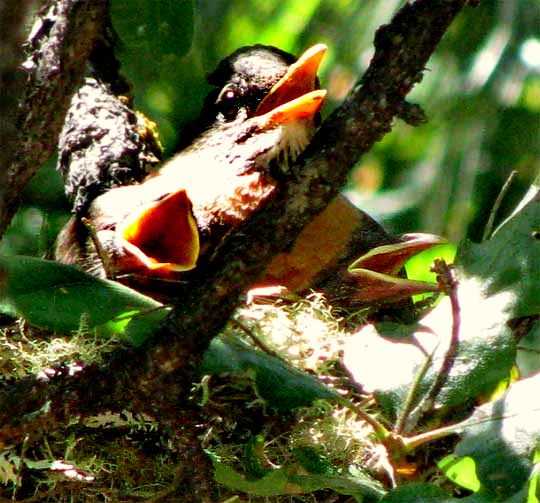
American Robins, Turdus migratorius, live in many places other than in suburban and small town backyards. In North America's wilderness areas their niche is that of forest edges and woods openings. Robins prefer such semi-open areas to deep, shadowy, mature forests. Before humans arrived in North America, robins benefited if a fire or storm opened up a forest. When settlers came, robins benefited from the ensuing logging and clearing.
Therefore, one reason robins are common in our backyards is that backyards, with their widely spaced trees, open lawn areas, and occasional weedy spots, from the robin's perspective, are similar to forest edges, or parts of a forest that has been ravaged by fire or a storm.
If American Robins have benefited from human destruction of our forests, many more species have suffered. A 2019 New York Times article reports that the number of birds in the United States and Canada has fallen by 29 percent since 1970, and that 2.9 billion fewer birds are alive now than there were 50 years ago. Habitat destruction and pesticides are important reasons.
 Kirtland's Warbler, Setophaga kirtlandii the rarest and most specialized of American warblers; image courtesy of US Fish & Wildlife Service
Kirtland's Warbler, Setophaga kirtlandii the rarest and most specialized of American warblers; image courtesy of US Fish & Wildlife ServiceAnother reason American Robins are common in our backyards is that they eat a variety of foods and nest in a variety of backyard situations. In contrast, Kirtland's Warblers breed only in large tracts of Jack-pines growing about six to eighteen feet tall (2-4m). Consequently, Kirtland's Warblers are among the rarest of birds, breeding only in limited parts of northern Michigan and nearby Wisconsin and Ontario. Contrast this persnicketiness -- this limitation to a narrow ecological niche available only in a small geographic area -- with the robin's behavior:
 American Robin mother with two nestlings, cooling themselves by evaporation from their open beaks
American Robin mother with two nestlings, cooling themselves by evaporation from their open beaksOne moment you might see a robin gulping Poison Ivy fruits, and then the next it may be on the ground tugging at an earthworm. A study of the American Robin's diet found that during the fall when many fruits and seeds are available, plant matter makes up about 80 percent of its diet. However, in the spring, when insect eggs hatch and earthworms work close to the soil's surface, plant matter drops to only about 20 percent!
Therefore, here are the two main reasons American Robins are so common in our backyards:
- Our backyards are a little like natural openings in forests, for which robins are naturally adapted.
- Robins are flexible enough to eat many kinds of food and nest in various situations.